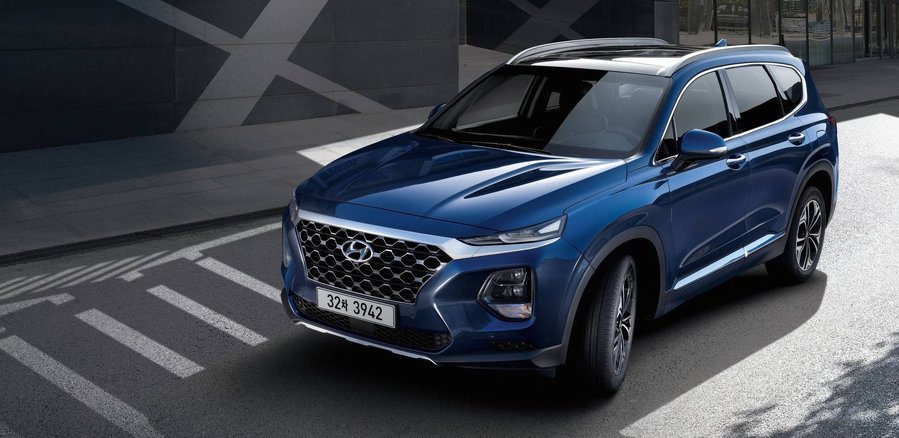2019 Hyundai Santa Fe Debuts Handsome Look, Diesel Engine Option

You might have already seen the 2019 Hyundai Santa Fe when the company just announced it for the South Korean market, but the firm has now confirmed details about the SUV's fourth generation in the United States, including the inclusion of a diesel engine in the powertrain range. In addition, a Hyundai executive seems to have confirmed that a hybrid variant is on the way, though for which regions is unclear at this time. Still, not bringing that powertrain to the U.S. would be strange indeed. For the near-term anyway, the new Santa Fe will arrive at dealers in the U.S. this summer.
For the new generation, Hyundai will overhaul the model's naming scheme. Rather than calling the five-passenger version the Santa Fe Sport, it will now simply be the Santa Fe. Later, the long-wheelbase, seven-passenger variant will become the Santa Fe XL. Finally, the company will develop a new three-row, eight-passenger SUV under a new name.
There is one small, somewhat confusing snag in this plan. If a buyer gets the new 2.2-liter turbodiesel four-cylinder with an estimated 200 horsepower (149 kilowatts) and 320 pound-feet (434 Newton-meters), then there's a small third-row seat. Hyundai says this is for "occasional use," suggesting room might be tight back there.
The 2019 Santa Fe will grow slightly over the existing Santa Fe Sport for a larger cabin volume. The wheelbase grows to 108.9 inches (276.61 centimeters), versus 106.3 inches (270 cm) currently. Overall length is now 187.8 inches (477.01 cm), instead of 185 inches (469.9 cm). The result is that passenger volume increases to 110.7 cubic feet (3,134.7 liters) – a boost from 108 cubic feet (3,058 liters) currently.
In addition to the diesel mill, buyers have a choice of two gas-fueled engines. The base powerplant is a 2.4-liter four-cylinder with an estimated 185 hp (138 kW), and customers can upgrade to a turbocharged 2.0-liter four-cylinder with a predicted output of 232 hp (173 kW).
Regardless of engine choice, the 2019 Santa Fe comes with Hyundai's new, internally developed eight-speed automatic that replaces the existing six-speed. The company reports that the gearbox is lighter and more efficient than the one it replaces. The transmission hooks up to a multi-mode all-wheel-drive system with Normal, Sport, and Smart settings.
The fourth-gen Santa Fe features a boxy, more chiseled appearance than the current model. A hexagonal grille with metallic trim provides a high-class look. Skinny headlights and stacked foglights give the model a high-tech aesthetic, too. Hyundai claims that skinny A-pillars and larger glass panels in the rear quarter windows boosts outward visibility by 40 percent.
Inside, the Santa Fe looks handsome. A revised center stack features comes standard with a seven-inch infotainment system with support for Apple CarPlay and Android Auto. A newly tilted layout reportedly reduces glare on the screen, too. Buying the Santa Fe in at least the SE trim gets buyers quite a suite of assistance tech, including high beam assist, forward collision avoidance, blind spot warning, lane keep assist, adaptive cruise control, rear view monitor, and park distance warning. Many parents would find the rear seat alert useful that reminds them if a child is in the car by flashing the headlights and honking the horn.
Related News
